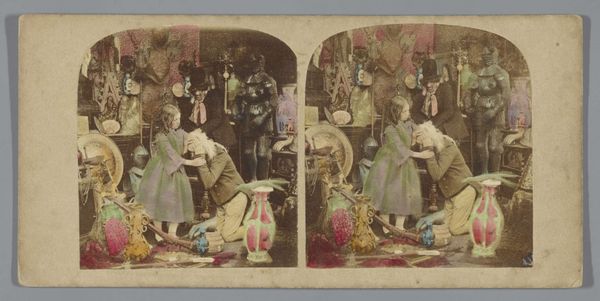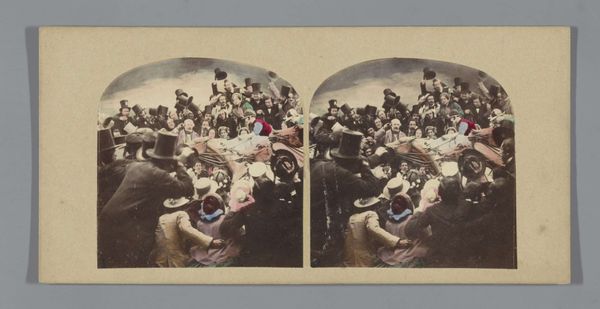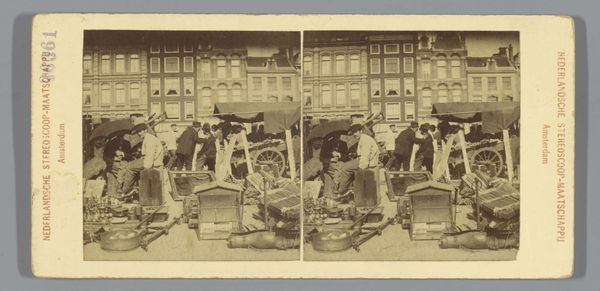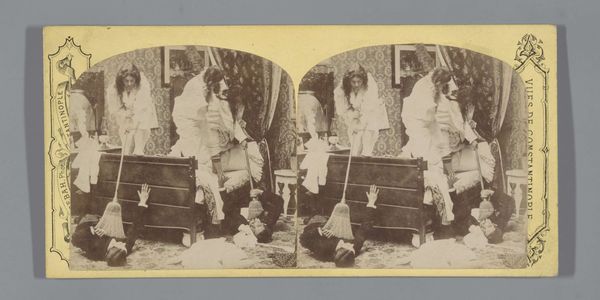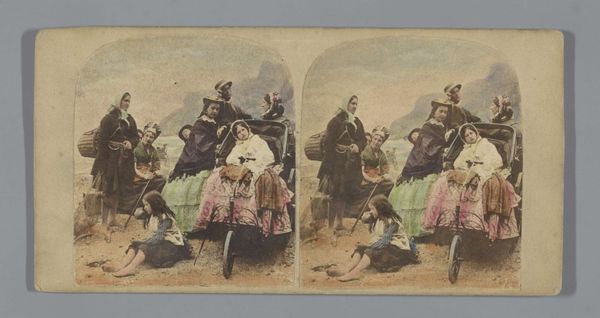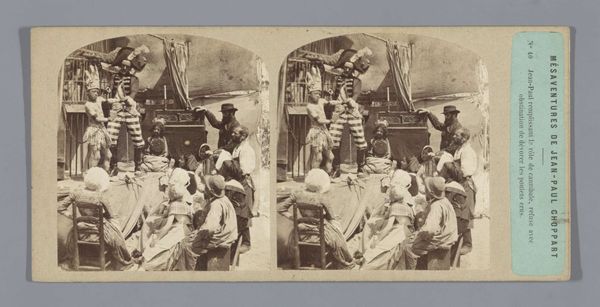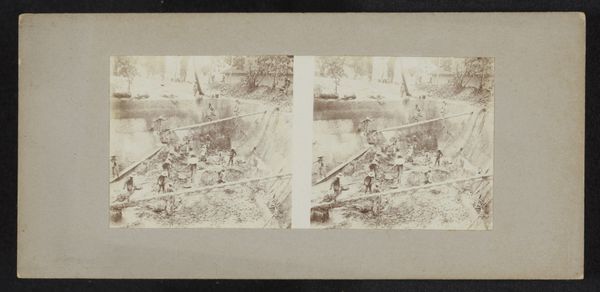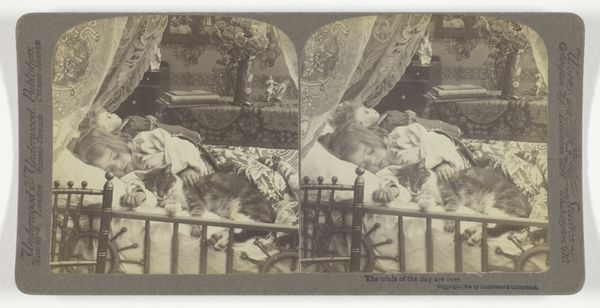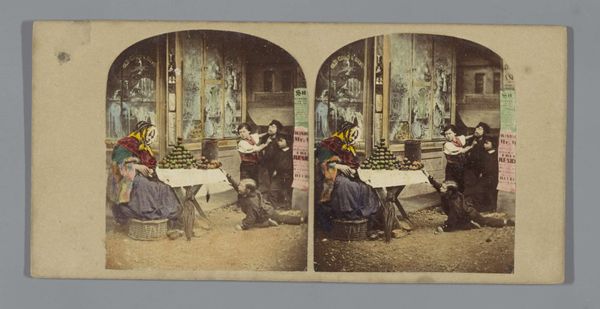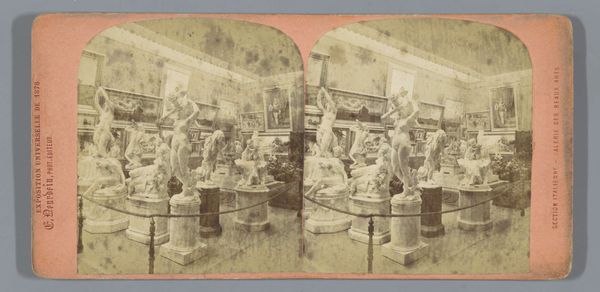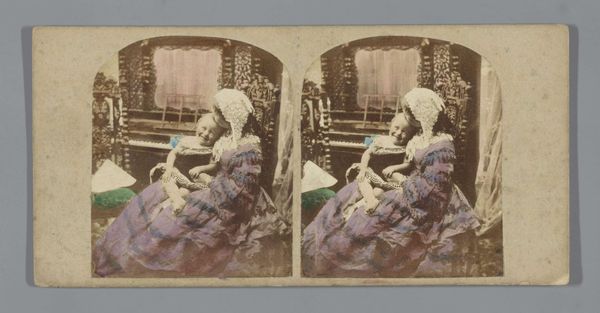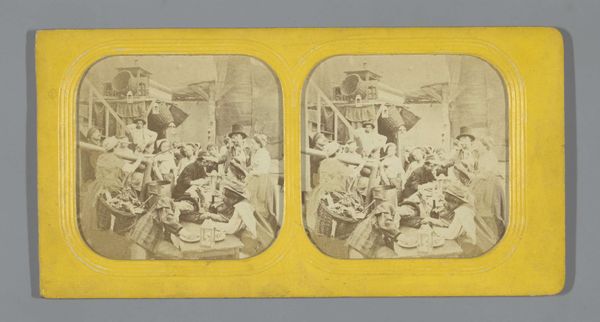
Dimensions: height 82 mm, width 173 mm
Copyright: Rijks Museum: Open Domain
Editor: This is an interesting image, a print of a photograph called "Twee mannen aan een tafel worden bezocht door een spook," made sometime between 1856 and 1859. The composition shows performers on a small stage observed by an audience, with the main focus on someone doing the splits atop a pole. What are your thoughts on this peculiar photograph? Curator: Indeed. What strikes me most about this stereograph is how it presents the body. Looking through a lens of critical theory, we might ask: who is allowed to perform these spectacles, and for whose consumption? How are notions of class and labor represented by this photograph? The people in the audience, how do you think the availability of visual representations of the working body challenged or reinforced their social standing and understanding of labor practices during the industrial revolution? Editor: That's a great question. Looking at the image, the audience is consuming an exhibition of the human form that's beyond their own capacity, a demonstration of physical capabilities. I imagine the ability to view spectacles of working class labor, and even celebrate those from a safe distance would reaffirm to the industrial worker a sense of distance, and class separation. Do you think this is connected with Romanticism? Curator: Absolutely. The image's ties to Romanticism underscore a fascination with the exceptional, the exotic, and the past. But Romanticism, remember, often overlooked the realities of those who bore the weight of these romanticized ideals. We see the performance, the spectacle, but what about the performer's realities? Think of the power dynamics involved and whose stories often went untold or unheard in artistic representations. Considering the labourer’s representation during this period is to consider questions about cultural authority and representation. Editor: That’s really eye-opening! It’s pushed me to think past the obvious Romantic themes to its potentially skewed societal view and I now better recognize power dynamics represented. Curator: Excellent, a great thing to think about as we analyze this art in an interdisciplinary light.
Comments
No comments
Be the first to comment and join the conversation on the ultimate creative platform.
